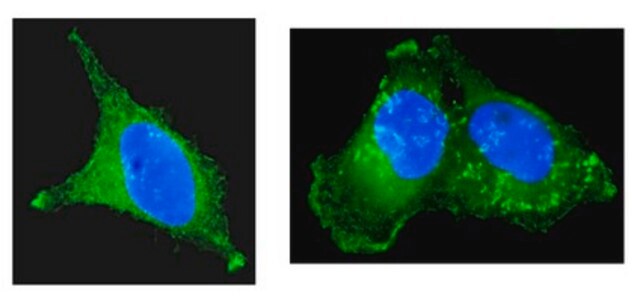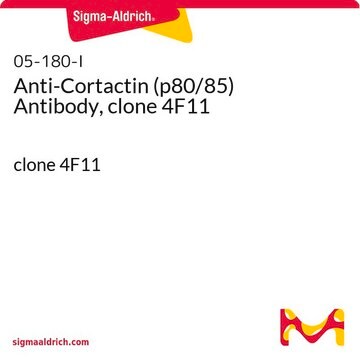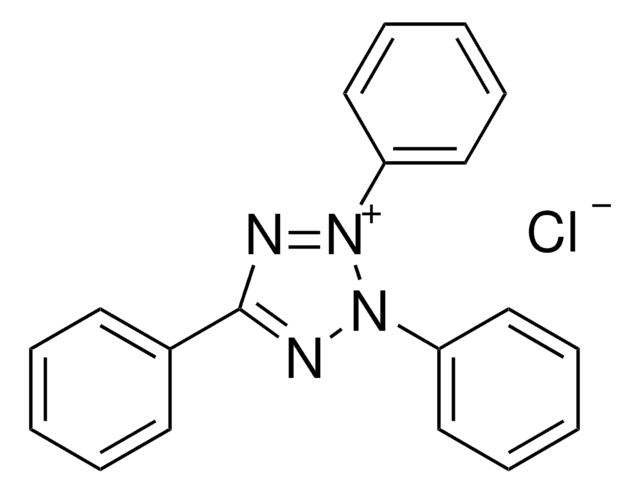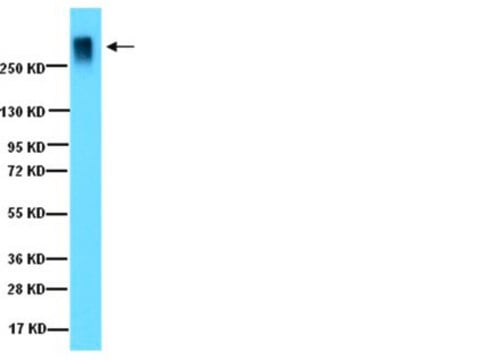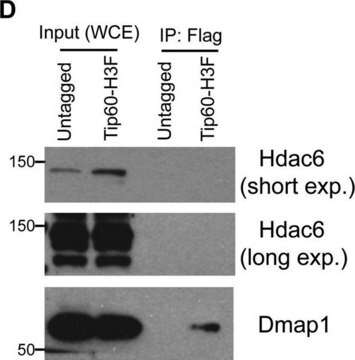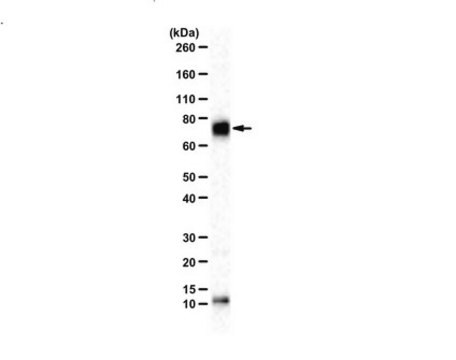09-881
Anti-acetyl Cortactin Antibody
from rabbit, purified by affinity chromatography
Sinonimo/i:
Amplaxin, Oncogene EMS1, Src substrate cortactin
About This Item
Prodotti consigliati
Origine biologica
rabbit
Livello qualitativo
Forma dell’anticorpo
affinity isolated antibody
Tipo di anticorpo
primary antibodies
Clone
polyclonal
Purificato mediante
affinity chromatography
Reattività contro le specie
mouse, human
Reattività contro le specie (prevista in base all’omologia)
Drosophila (based on 100% sequence homology), rat (based on 100% sequence homology)
tecniche
western blot: suitable
N° accesso NCBI
N° accesso UniProt
Condizioni di spedizione
wet ice
modifica post-traduzionali bersaglio
acetylation (not specified)
Informazioni sul gene
human ... CTTN(2017)
Descrizione generale
Recent research efforts show cortactin is acetylated in vivo and is deacetylated by HDAC6 (Histone deacetylase 6). HDAC6 is a tubulin-specific deacetylase that regulates microtubule-dependent cell movement. In recent studies it was demonstrated that HDAC6 binds cortactin and alters the ability of cortactin to bind F-actin by modulating a “charge patch” in its repeat region. Findings suggest that, in addition to its role in microtubule-dependent cell motility, HDAC6 influences actin-dependent cell motility by altering the acetylation status of cortactin, which, in turn, changes the F-actin binding activity of cortactin. The acetylation level of cortactin may correlate to tumor metastases and acetylated cortactin may be considered a potential metastasis marker.
Specificità
Immunogeno
Applicazioni
Cell Structure
Cytoskeleton
Qualità
Western Blot Analysis: 2.5 µg/ml of this antibody detected Cortactin on 10 µL of HeLa-Anti-Cortactin immunocomplex treated with TSA/Nicotinamide.
Descrizione del bersaglio
Stato fisico
Stoccaggio e stabilità
Risultati analitici
HeLa-Anti-Cortactin immunocomplex treated with TSA/Nicotinamide
Altre note
Esclusione di responsabilità
Non trovi il prodotto giusto?
Prova il nostro Motore di ricerca dei prodotti.
Raccomandato
Codice della classe di stoccaggio
12 - Non Combustible Liquids
Classe di pericolosità dell'acqua (WGK)
WGK 1
Punto d’infiammabilità (°F)
Not applicable
Punto d’infiammabilità (°C)
Not applicable
Certificati d'analisi (COA)
Cerca il Certificati d'analisi (COA) digitando il numero di lotto/batch corrispondente. I numeri di lotto o di batch sono stampati sull'etichetta dei prodotti dopo la parola ‘Lotto’ o ‘Batch’.
Possiedi già questo prodotto?
I documenti relativi ai prodotti acquistati recentemente sono disponibili nell’Archivio dei documenti.
Il team dei nostri ricercatori vanta grande esperienza in tutte le aree della ricerca quali Life Science, scienza dei materiali, sintesi chimica, cromatografia, discipline analitiche, ecc..
Contatta l'Assistenza Tecnica.